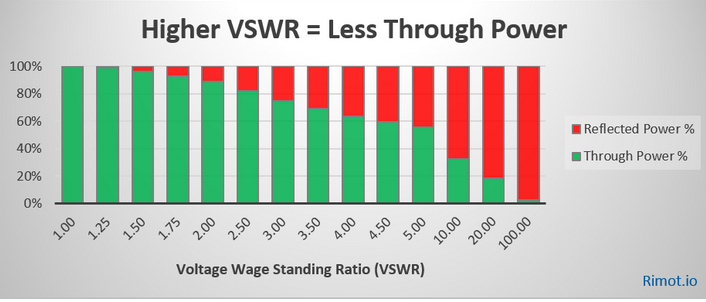In Part 1 of this blog, we will discuss VSWR and reflected power. In Part 2, we will discuss “Return Loss.” Together, they will help the reader understand diagnosing antenna issues. Of course, should you have any questions, please contact sales@KNSDenver.com to arrange a more detailed discussion with one of our engineers.
There are several ways to tell if the antenna you are using is doing its job:
A watt meter can be used to determine how much power is being transmitted into the air and how much is being reflected back down to the transmitter and potentially causing problems.
Pros
At frequencies below 1Ghz, this is an easy test to perform and does not require a lot of training to perform or to interpret the results. As a general rule, you want to have less than 10% of the forward power reflected back down the line. Historically this has been represented by VSWR “Voltage Standing Wave Ratio” charts which are often printed on the back of the meter itself.
Typically, an antenna should be better than 2:1 VSWR, which indicates that about 10% of the power is being reflected down towards the transmitter. A much better antenna will have a VSWR of 1.5:1, which will have only 4% of the power reflected back down from the antenna.
A good rule of thumb is that if you see 100% of the power reflected, then you have a problem directly after your meter. If you see about 50% reflected, then your problem is most likely on the far end of the cable or in the antenna.
Cons
Watt Meters are not very accurate at low frequencies and are even less accurate at higher frequencies. You will find that you will get different results in the same test if you use a different length of test cable. This because you are looking at the voltage and it changes based on where you sample it in the line. This can make it difficult to diagnose a problem in certain situations.

